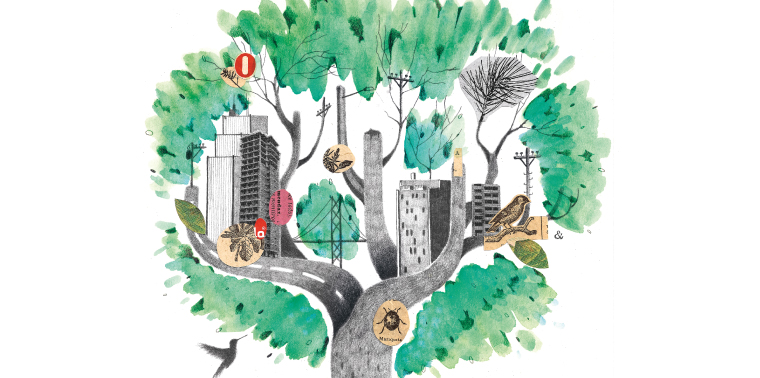Far from being just a fancy trick, the nature-inspired ability to adjust to circumstances could save your life. Nearly 70,000 bridges across the U.S. are classified by the Federal Highway Administration as “structurally deficient”—two words it’s hard not to think about when you’re driving across a span of concrete over a 100-foot drop. While these bridges aren’t exactly crumbling beneath our tires, they are getting old and threatening to fail us in the most devastating of ways. Could nature inspire a better design next time? Researchers at the Swiss Federal Institute of Technology think so. They’re developing bio-inspired bridge designs that have the built-in ability to adapt to potential problems.
Using the structural principle of tensional integrity, or tensegrity, this bridge design is made up of two sets of components that are in either perfect tension or perfect compression. It’s a lightweight combination of struts and cables that is both strong and efficient. With the addition of sensors and actuators, tensegrity bridges can adapt their shape to account for the varying structural stresses of changing environments, such as wind or heat or particularly heavy loads, mimicking how nature stabilizes molecules, cells and even entire organisms. The result is a bridge that knows when its structure is being compromised and slightly rearranges its components to compensate—and stay standing.
Return on Investment
For Benyus and Biomimicry 3.8, applying the principles of biomimicry or even bio-inspiration to infrastructure and city problems is the future of design. More than half the world’s population now lives in urban areas; as that proportion grows, finding better ways to keep urban systems functioning will be even more important than it is today.
“When Category 5 hurricanes start coming up the East Coast every couple of years, that’s an indication that we need to get creative,” Benyus says.
Some people worry that transitioning to biomimetic infrastructure like engineered wetlands for water treatment is too cost-prohibitive to really work in urban areas. But Benyus rejects that concern outright.
“That’s a hackneyed excuse. It’s old. It no longer applies,” she says, arguing that there’s a clear return on these investments in terms of energy expenditures, water savings and the productivity of people. Continuing along the conventional path, she says, may be contributing to greater problems in the future. We need to look only as far back as the latest natural disaster to see how things can go wrong.
“When Category 5 hurricanes start coming up the East Coast every couple of years, that’s an indication that we need to get creative,” Benyus says.
And getting creative is one of those things we humans do so well. But we don’t have to do it all alone. Nature has already field-tested many of the solutions we need for the problems we face. If we only look, they’re not hard to find.
Ensia shares solutions-focused stories free of charge through our online magazine and partner media. That means audiences around the world have ready access to stories that can — and do — help them shape a better future. If you value our work, please show your support today.
Yes, I'll support Ensia!

Have read a tiny bit about bio-mimicry in the past, but nice to learn more about how it's developing in the here and now.
Thanks!
Dr. Korkmaz would be a great asset to get as a professor at a US University.
Another example of biomimetic thinking applied to urban planning is the emerging field of "urban metabolism" -- which looks at the flows of water, waste, and other nutrients through urban ecosystems. A great application of this approach is the design of Lloyd Crossing by Mithun Architects Designers + Planners, in which the design team compared flows of water, carbon, etc. against a "pre-development baseline."
My colleague Lyle Solla-Yates and I have also used this approach in our research, for instance investigating the impact of alternative waste management systems: http://www.carlsterner.com/research/2010_toward_the_green_city.shtml